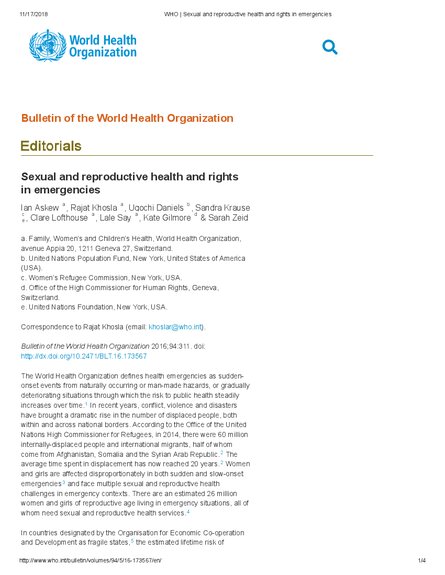
The World Health Organization defines health emergencies as sudden-onset events from naturally occurring or man-made hazards, or gradually deteriorating situations through which the risk to public health steadily increases over time. In recent years, conflict, violence and disasters have brought a dramatic rise in the number of displaced people, both within and across national borders. According to the Office of the United Nations High Commissioner for Refugees, in 2014, there were 60 million internally-displaced people and international migrants, half of whom come from Afghanistan, Somalia and the Syrian Arab Republic. The average time spent in displacement has now reached 20 years. Women and girls are affected disproportionately in both sudden and slow-onset emergencies and face multiple sexual and reproductive health challenges in emergency contexts. There are an estimated 26 million women and girls of reproductive age living in emergency situations, all of whom need sexual and reproductive health services.